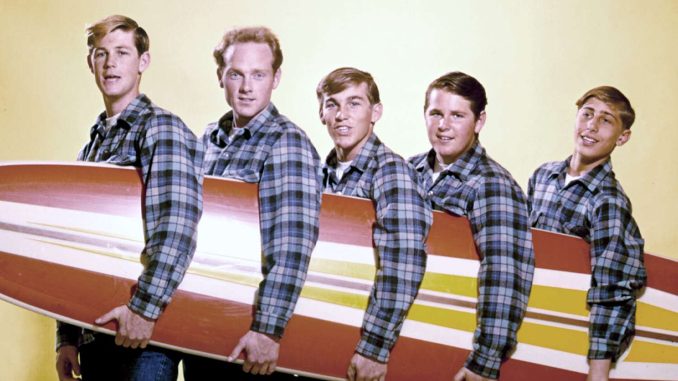
The new Disney+ documentary “The Beach Boys” is one in a long line of both documentary and narrative features focusing on The Beach Boys and their associates, many of which have focused on the troubled genius at the band’s center, Brian Wilson. What sets “The Beach Boys” apart is the attention given to the band as a whole; while Brian’s contribution is respectfully acknowledged and explored, his brothers Dennis and Carl get equal time — along with other band members like Mike Love, Al Jardine, and the guest players who rotated in and out of the band. There’s also a rich sense of context in terms of what The Beach Boys meant to their era and to the musicians who came afterward, thanks to a wealth of carefully selected archival footage and contemporary interviews with musicians like Janelle Monae and One Republic’s Ryan Tedder.
The information all washes over the audience with the smooth, fast pace of a great Beach Boys song, of which there are many expertly placed throughout the documentary as score. Arriving at a final shape that shared the band’s ability to make the complicated look effortless was no small task for editors Jake Hostetter and Robert A. Martinez, who were tasked with sifting through decades of archival material and hours of new interviews to tell the band’s story clearly and concisely. The job was made even more challenging by the filmmakers’ desire to give as broad a perspective as possible. “We were working from the inside out,” Martinez told IndieWire. “As legendary a band as they are, the story could feel small if it only exists among the band members. So we wanted to broaden out the aperture of their influence and show the affect on the popular culture.”
Hostetter and Martinez began work from an outline created by writer Mark Monroe that established the general trajectory directors Frank Marshall and Thom Zimny planned to follow, but the film evolved as new interviews came in and created avenues for exploration. “We did most of the band members first and got them all out of the way, which was important toward building the early acts,” Hostetter told IndieWire. Before the new interviews were conducted, Hostetter got a head start on cutting the first act of the documentary by using archival interviews as placeholders, which established an initial structure and helped give the directors more pointed questions to ask. “I did the first pass using archival interviews and outtakes from other documentaries, and then Robert could go back and recut them and introduce characters with the modern interviews.”

Those character introductions were more complicated than one might think, given the abundance of musicians who came and went as members of the band and collaborators, not to mention the homogenous look of the musicians in their early days. “They all had uniforms and were sublimating themselves to fit the band,” Martinez said. “Sometimes it was like, ‘Who is that?’” The editing in the film’s early scenes is tailored to distinguish between the various band members rather than lumping them together as they so often were in the public eye, with Hostetter and Martinez taking advantage of the abundance of footage to create a lot of visual variety. They also came up with a simple but extremely effective way of keeping the audience on top of who was in and out of the band at any given moment, using a photo of the band that they would keep returning to, ripping the edge off of it to remove band members as they left and replacing the edge with pictures of whoever was newly added.
That shuffling of band members was essentially a result of Brian hating touring and preferring to stay in the studio creating music, a fact that helped give “The Beach Boys” a dual narrative structure. One of the most fascinating things about the documentary is the way that it reveals how The Beach Boys was essentially two bands, the touring band and the studio band, and as Hostetter and Martinez cut between the two, we see the separate evolutions of both. “That gave us an opportunity to take a break from Brian because he’s such a powerful creative person,” Martinez said. “He could very easily take the wheel, and we had to constantly remind ourselves we’re not making a Brian Wilson documentary, we’re making a Beach Boys documentary. Spreading the wealth became easier after we understood the story, but the biggest challenge was always the scope of this thing, because you can’t use everything. So what is the story that we want to tell?”
Ultimately, one of the guiding principles was telling the story in a way that would convey the energy and infectiousness of The Beach Boys to a new generation. “Our goal was really to build appreciation and joy for the band,” Hostetter said. The editors had access to raw takes and stems from various Beach Boys recordings, and as with the archival footage, stills, and other ephemera, they wanted all of it. “We got notes from the producers saying, ‘Sorry, there’s a lot of this,’ and we’d say, ‘No, don’t worry, we’ll make time,’” Martinez said. For Hotstetter, getting to hear the music broken down into its individual components and then play with it in the edit was the greatest pleasure of the project. “I’ve done a couple of music docs, and this was genuinely one where the music never got old,” he said. “Using the raw takes and bringing them to life to create a world…it was the best.”
“The Beach Boys” is now streaming on Disney+.
SOURCE: Indie Wire

